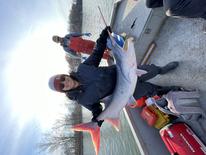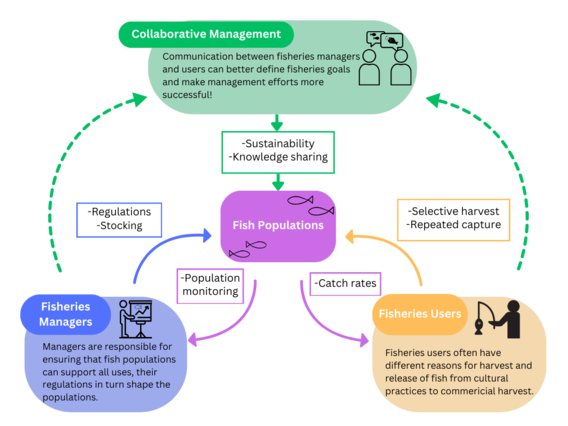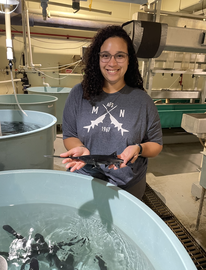By Shasta Kamara, MW CASC Graduate Student

Fish have always been a part of my life. Growing up I was always connected to fish through tending to my many aquariums, being in and around creeks, and going fishing. Because of this, I was fascinated by the diversity of freshwater fish. Later, as I began my undergraduate career, I became immersed in how environmental stressors can influence fish and how valuable fish populations are as sources of food and recreation.
Fishing can be an opportunity for people to get into nature and spend quality time with family, and it can provide an accessible source of food to the individual and community. Fisheries managers are the people behind the curtain making sure there are fish for everyone to catch by monitoring fish populations in your favorite fishing spots and setting fishing and harvest regulations to ensure there are enough fish for all the people using this resource.
Fish are experiencing multiple challenges in the face of climate change. They have to endure a wide range of temperatures, more variable weather, and changing seasons. Current fisheries management techniques may not be able to keep up with the changing climate and could lead to less successful management outcomes, including less fish for fisheries users. This is where conservation practices and evaluation of physiological limits of fish is useful for guiding management decisions. Evaluation of things like heat tolerance, stress after angling, and post-release behavior after angling or release from commercial harvest gear of popular sportfish can provide insights into how fish respond to current fisheries practices, allowing managers to make more informed decisions on angling and harvest timing to best create and preserve thriving fisheries.

The Suski Lab at the University of Illinois Urbana-Champaign aims to work with state fisheries managers and other organizations to answer questions relating to the conservation of aquatic organisms in the face of fisheries-driven and climate stressors. With the support of the Midwest CASC, current efforts have been focused on evaluating the influence of temperature on heat tolerance, recovery, and post-release behavior of the American Paddlefish, a popular sportfish and important commercial species. Paddlefish present a unique opportunity as their range spans from southern Canada to southern Louisiana, allowing us to evaluate how fish may differ in thermal tolerance and life history to cope with differences in temperature. Looking at how paddlefish in the southern reaches of their range persist will give us a peek into the potential future of fish in northern regions.

Shasta Kamara (she/her) is pursuing a doctorate in the Program of Ecology, Evolution and Conservation Biology at the University of Illinois Urbana-Champaign. Her research focuses on differences in Paddlefish across their range and aims to inform the conservation and management of the species.
